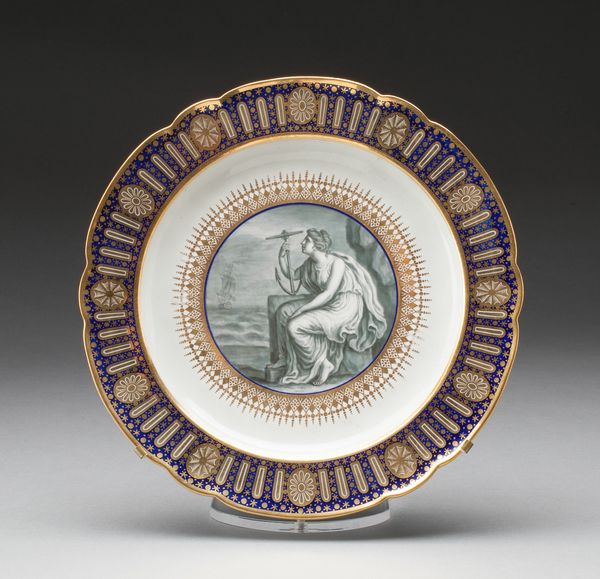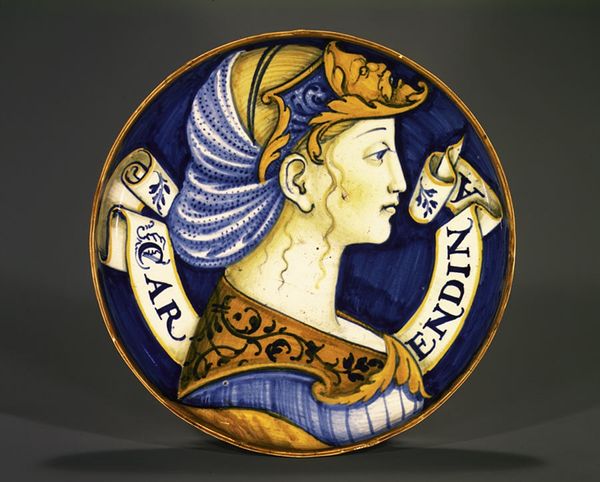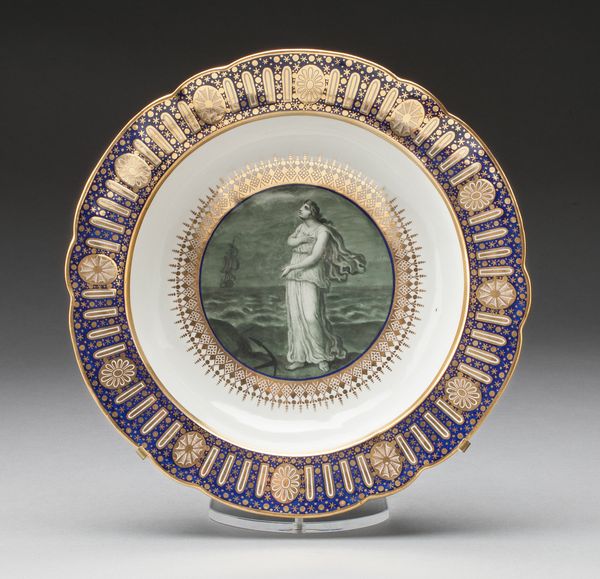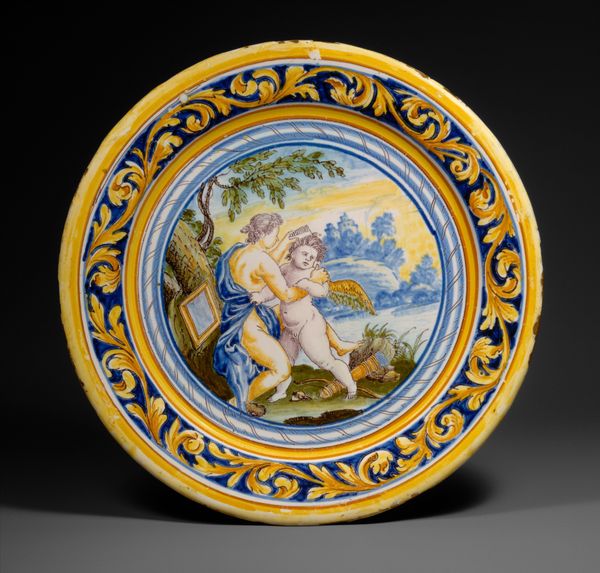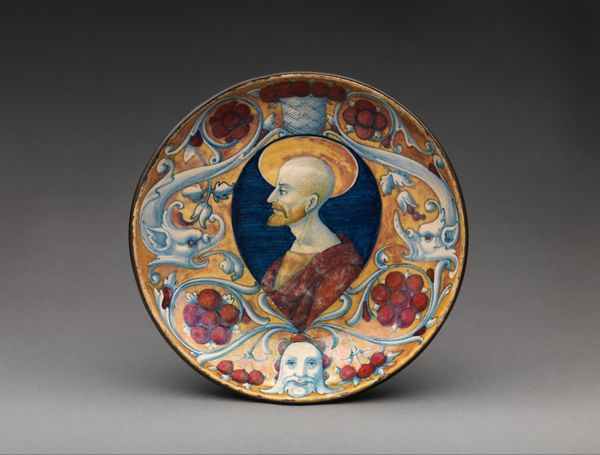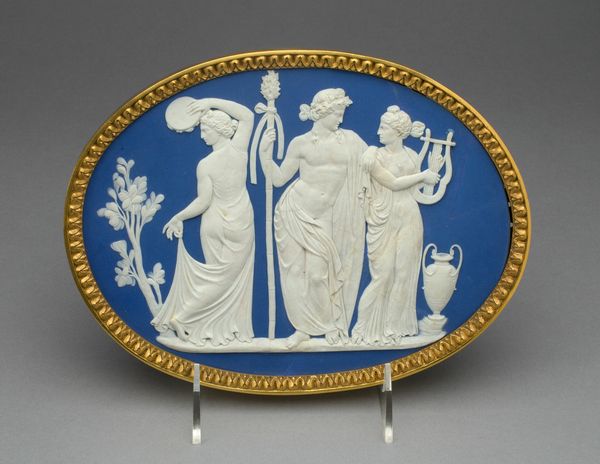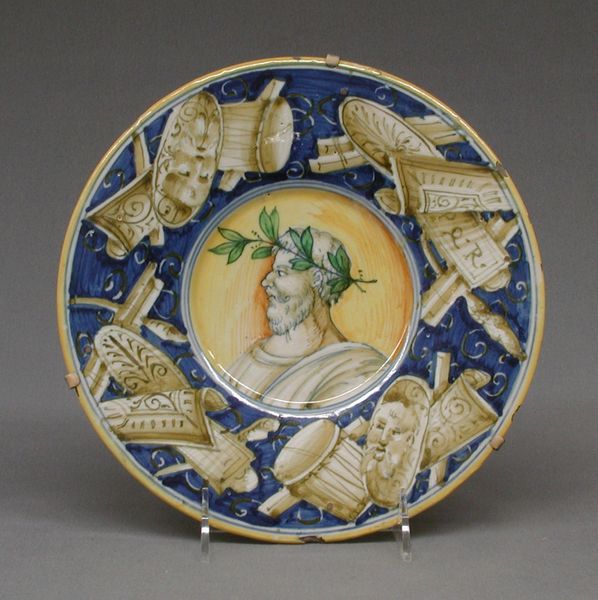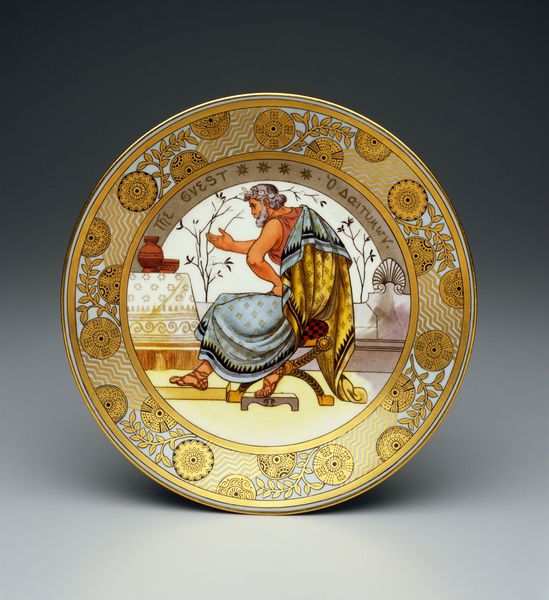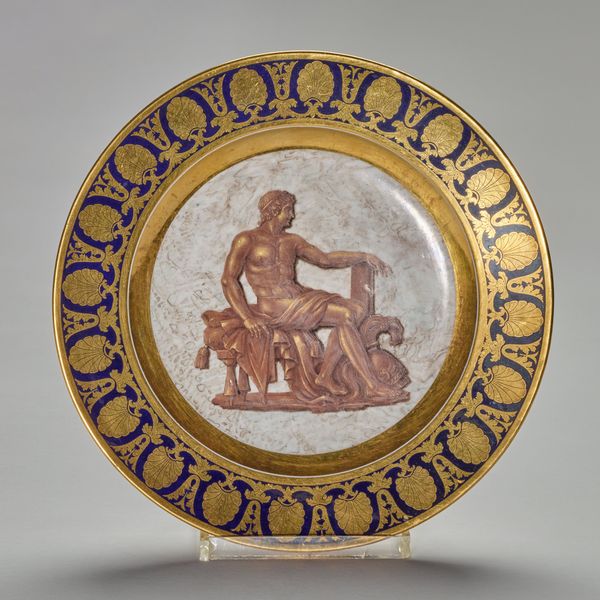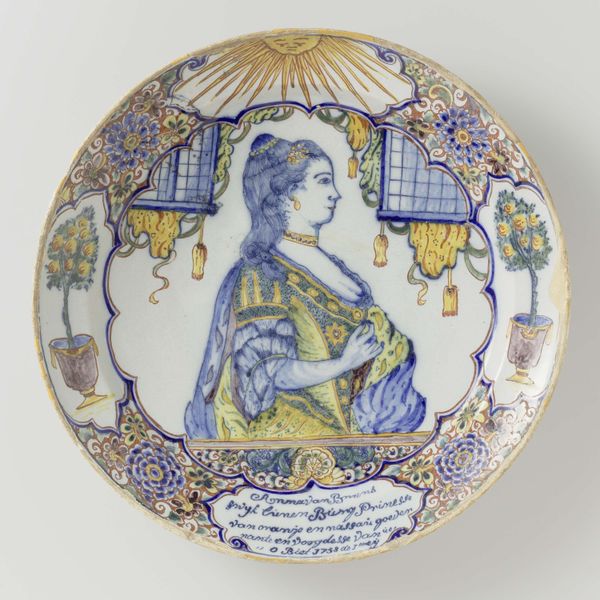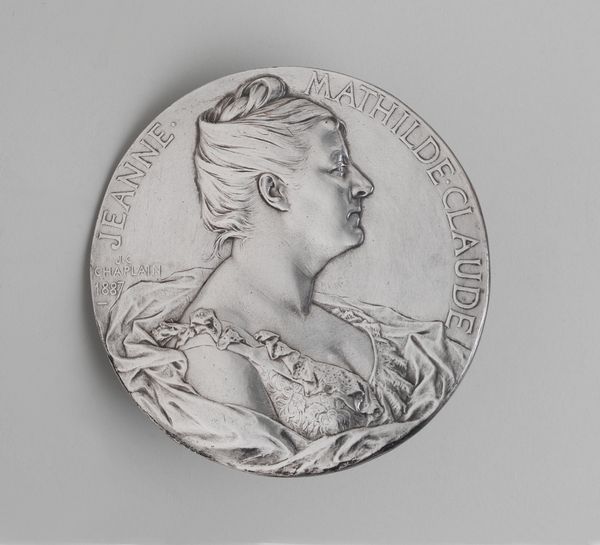
ceramic, sculpture
#
portrait
#
decorative element
#
ceramic
#
mannerism
#
sculpture
#
ceramic
#
men
#
decorative-art
#
italian-renaissance
#
profile
Dimensions: Overall (confirmed): 1 11/16 x 8 3/8 in. (4.3 x 21.3 cm)
Copyright: Public Domain
Curator: Well, isn't this stunning? The glaze almost glows. Editor: It’s striking. A regal, almost otherworldly profile against that rich cobalt background. There's something decidedly…Mannerist about it, that elongation and elegance. Curator: Indeed. What we're looking at is one half of a pair of ceramic plates created sometime between 1520 and 1599, during the Italian Renaissance. It’s attributed to Nicola da Urbino, a master of maiolica. These plates, which reside at the Metropolitan Museum of Art, show an understanding of Italian artwork production during that era, specifically how these plates circulated throughout noble households, solidifying claims to nobility through imagery. Editor: It does seem charged with symbolic weight. I see a female profile adorned with stylized foliage, what seems to be the wing of Mercury, plus that curling banner… Are we meant to connect her to a specific myth or allegory? And who exactly does 'PHILOMENA' refer to, as suggested by the lettering on that banner? Curator: That is exactly what fascinates about art in this era. While, on the one hand, these objects were part of noble family service, it wasn't out of the ordinary to see classical themes incorporated into the artwork that had social purpose. Editor: The layering of meaning! This could allude to Saint Philomena, a popular saint whose relics gained prominence in the 19th century. And isn’t the wing associated with Mercury traditionally connected with eloquence? Curator: Perhaps. I would lean to that these emblems were connected with nobility. But that is just the tension within decorative-art during the Renaissance! It served a social function while simultaneously presenting emblems of nobility. The figure itself could reference intellectual pursuits or a kind of idealized feminine virtue within Renaissance courtly culture. Editor: I see what you mean. The plate transcends its function. It operates as a mini stage, communicating ambition and virtue through carefully arranged symbols. What I find very intriguing, and which may seem like a simple decorative component of the image, is that curly banner and accompanying lettering; these simple but effective details anchor her story to our cultural consciousness. Curator: And how successfully the Renaissance aesthetic achieves that purpose. I walk away reminded again how visual artistry played a critical part in establishing claims to power. Editor: It's funny how a plate like this speaks volumes beyond its surface, hinting at submerged traditions of imagery.
Comments
No comments
Be the first to comment and join the conversation on the ultimate creative platform.
